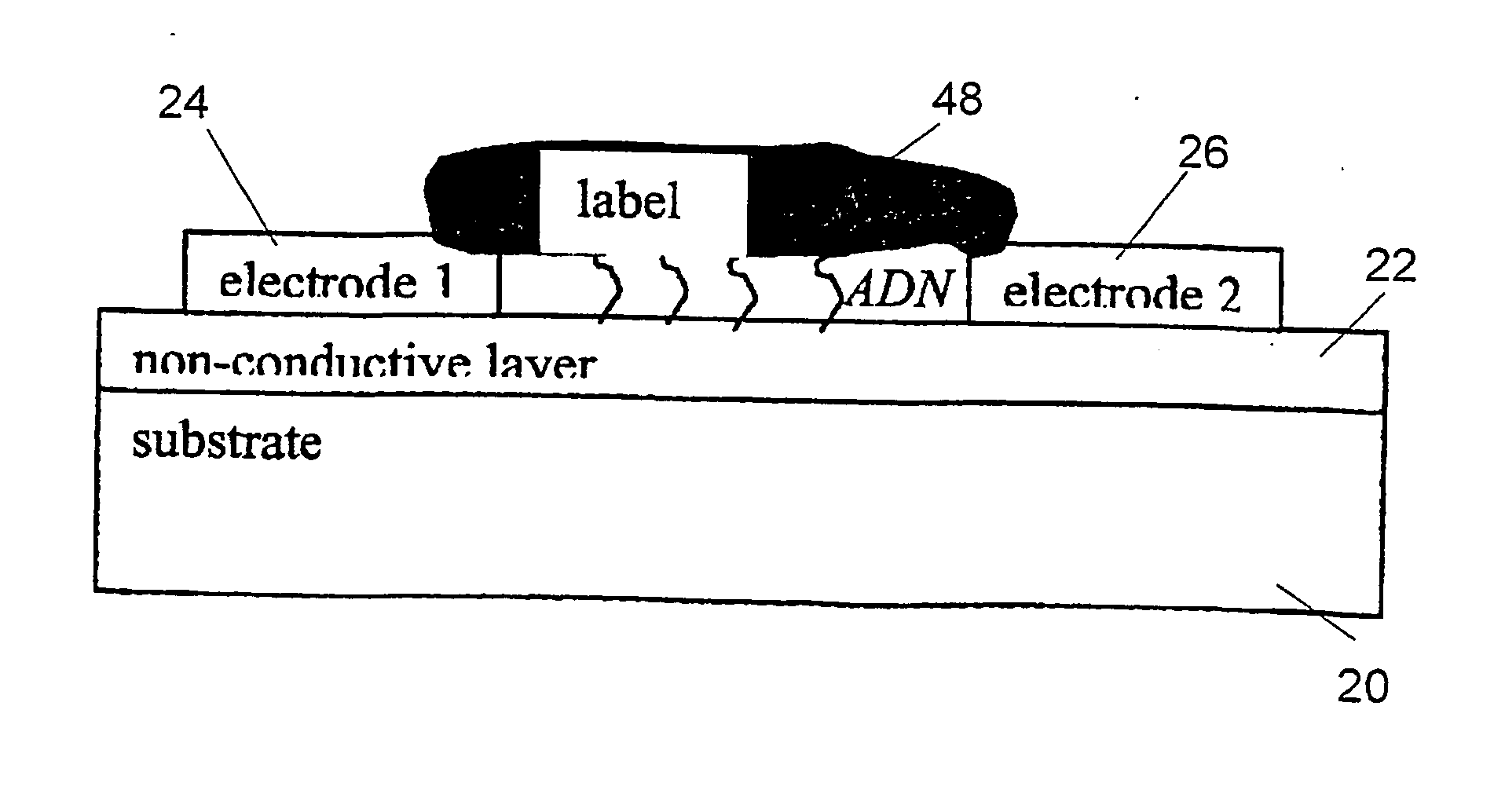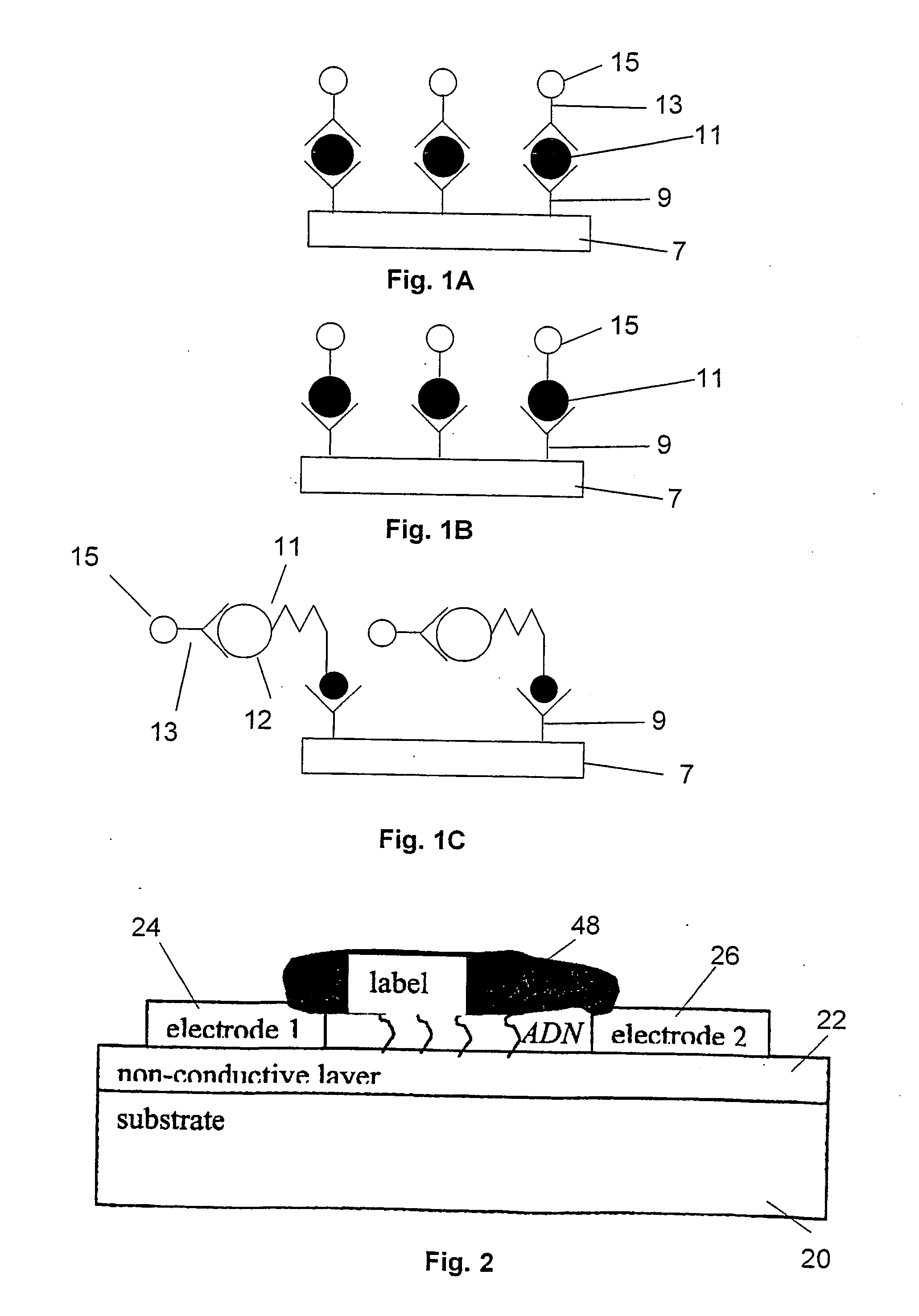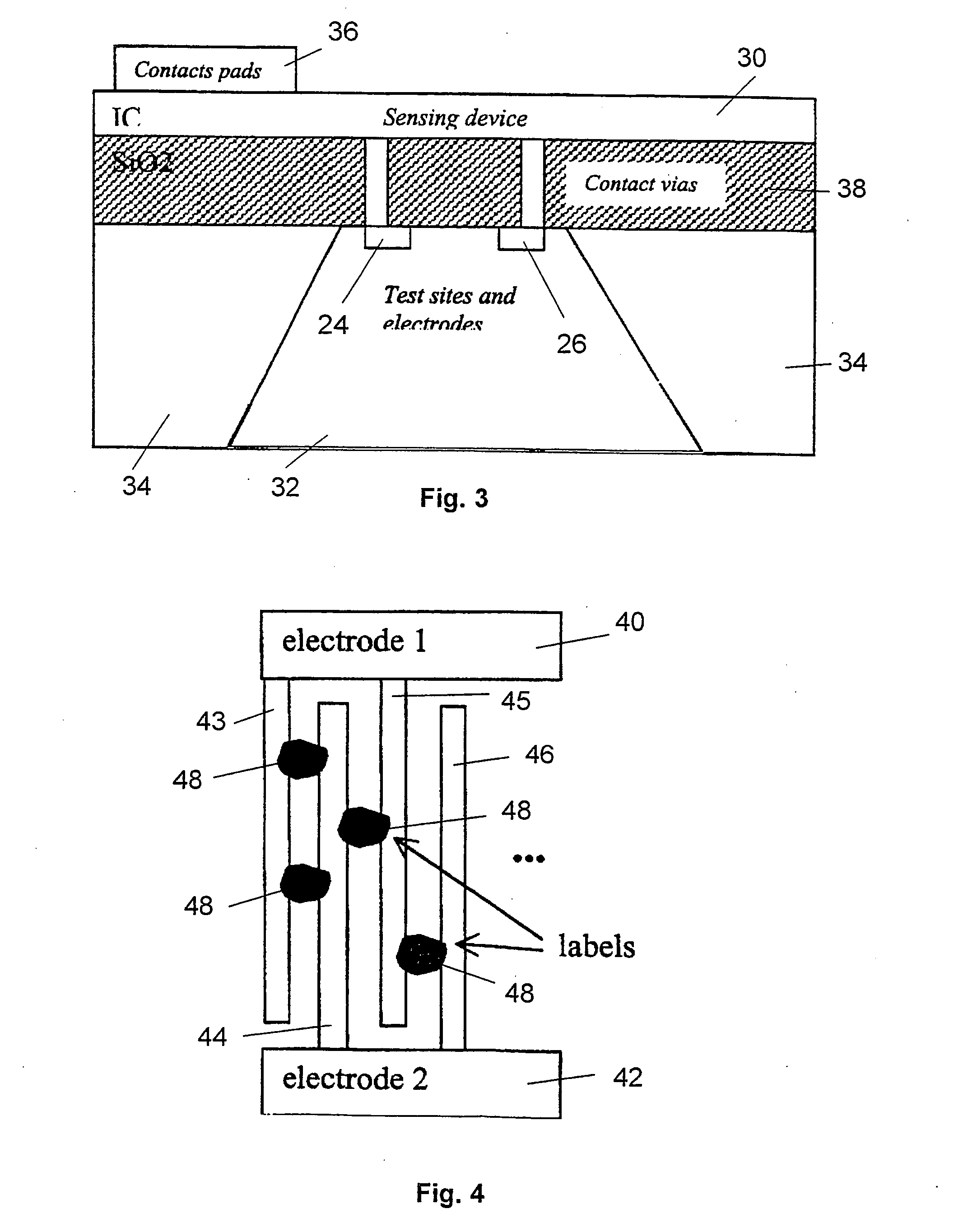Method and device for high sensitivity detection of the presence of dna and other probes
a technology applied in the field of high sensitivity detection of the presence of dna and other probes, can solve the problems of limited external optical detection of a specific opaque label such as silver, long processing time, and possibility of false positive readings
- Summary
- Abstract
- Description
- Claims
- Application Information
AI Technical Summary
Benefits of technology
Problems solved by technology
Method used
Image
Examples
example
Materials and Processes
[0109] Standard P-doped Si wafers were used to make the chips according to the present invention. In order to insulate the electrodes from the substrate and lowering the parasitic bulk effects, a 400 nm thick thermal wet oxide (SiO2) was grown—in fact previous experiments showed that this kind of material enhanced the binding of DNA to the support. The growing temperature and time of the SiO2 were 1000° C. and 1 h 16 min respectively. To guaranty a pure wet oxide, a short delay of around 1 minute only was left between oxygen and hydrogen valves opening.
[0110] The electrodes were manufactured with pure aluminium, by means of a lift-off process. This was preferred to an etching method because previous tests used to show a non-specific silver precipitation on a 240 nm-thick silicon oxide in the second case, after deposition and plasma etch of 1 μm of {Al+2% Si}. In the lift-off process, an aluminium thickness of 500 nm was used, and nitric acid was used for th...
PUM
| Property | Measurement | Unit |
|---|---|---|
| Distance | aaaaa | aaaaa |
| Distance | aaaaa | aaaaa |
| Size | aaaaa | aaaaa |
Abstract
Description
Claims
Application Information
 Login to View More
Login to View More - R&D
- Intellectual Property
- Life Sciences
- Materials
- Tech Scout
- Unparalleled Data Quality
- Higher Quality Content
- 60% Fewer Hallucinations
Browse by: Latest US Patents, China's latest patents, Technical Efficacy Thesaurus, Application Domain, Technology Topic, Popular Technical Reports.
© 2025 PatSnap. All rights reserved.Legal|Privacy policy|Modern Slavery Act Transparency Statement|Sitemap|About US| Contact US: help@patsnap.com



